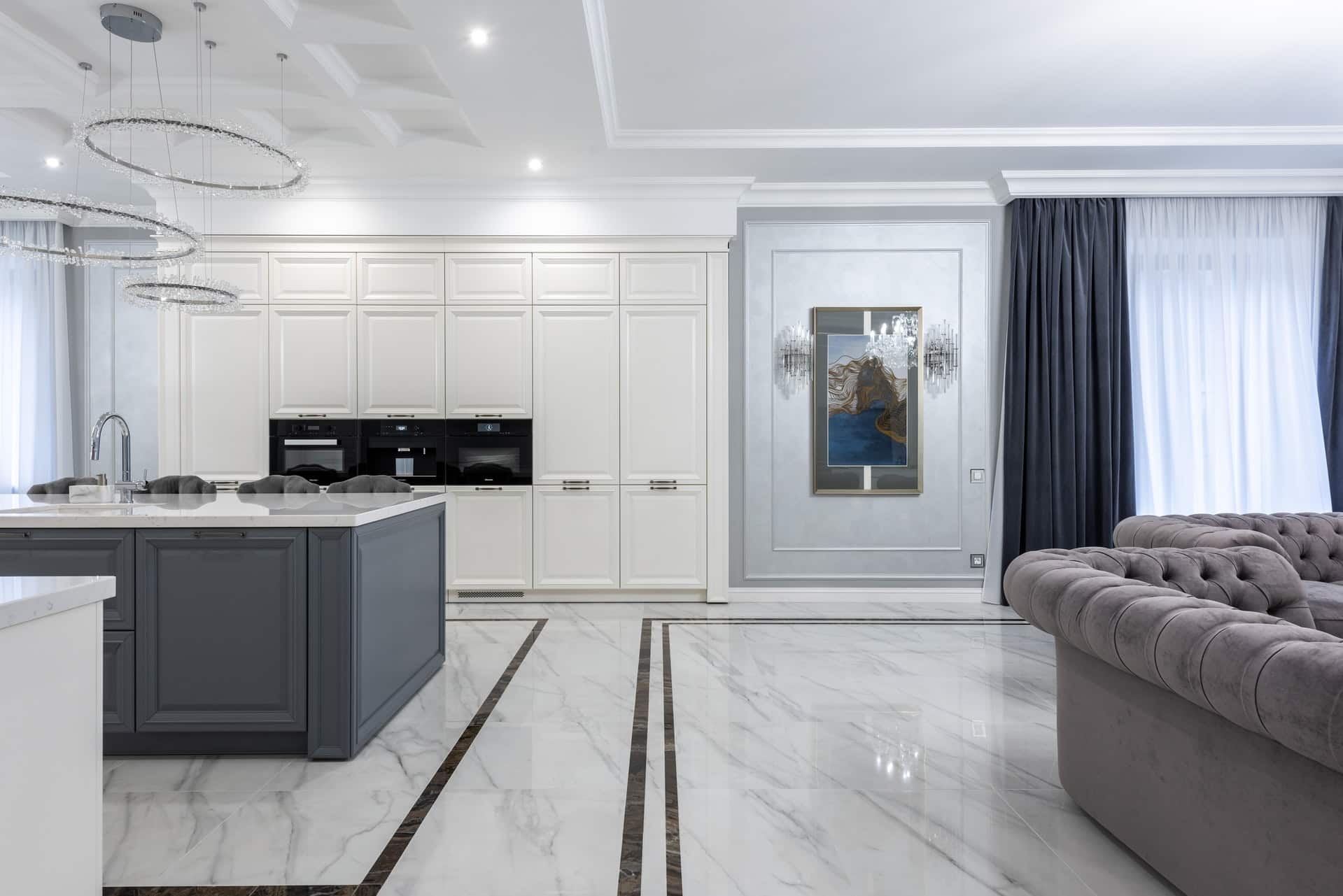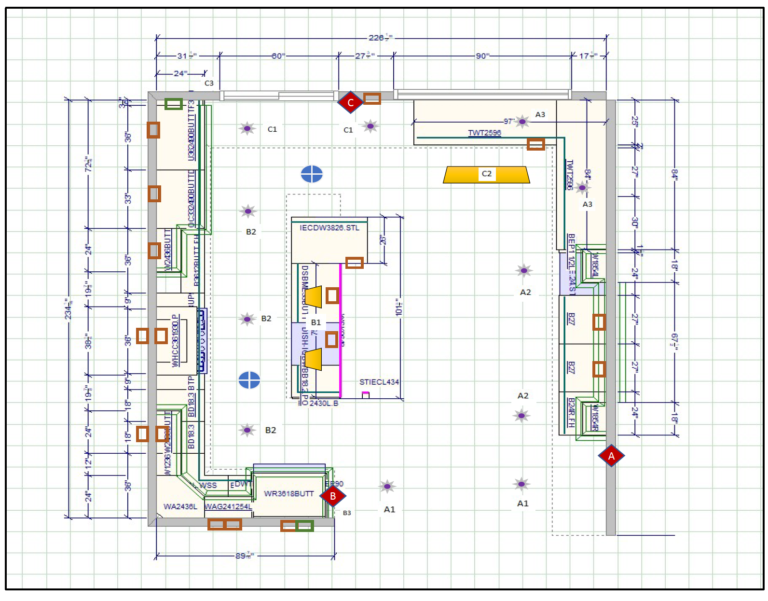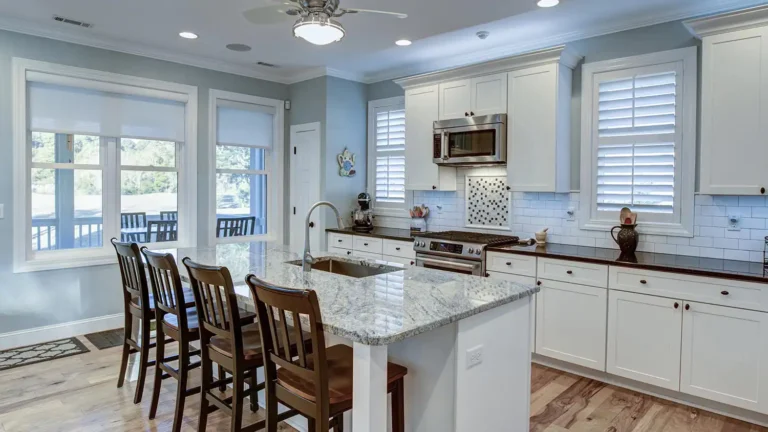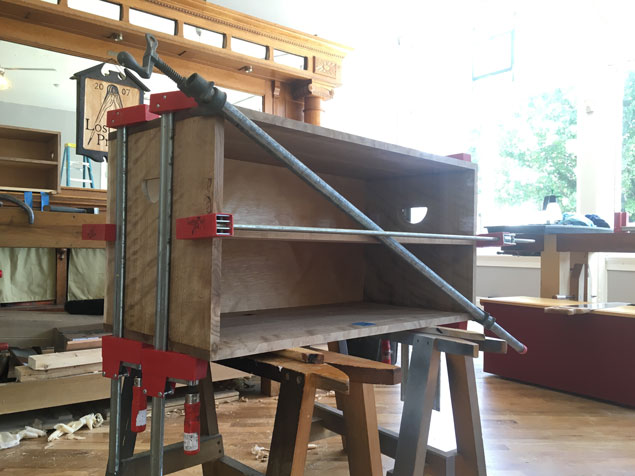Pros And Cons Of Marble Flooring In Kitchens
Marble flooring is a timeless flooring material that has been used in homes since ancient times. It is a beautiful and elegant flooring option that adds a touch of luxury to any room. In the kitchen, marble flooring adds a touch of sophistication and style. However, there are both advantages and disadvantages to using marble flooring in the kitchen. In this article, we will discuss the pros and cons of marble flooring in kitchens. We will also discuss the various types of marble and what to consider when installing marble flooring in your kitchen.
Overview of Marble Flooring
Marble is a classic and timeless stone that has been used in homes and buildings for centuries. With its elegant aesthetic and durability, it’s no wonder that marble flooring remains a popular choice for kitchens today. Before deciding on marble flooring for your kitchen, it’s important to understand the pros and cons of this natural material. Here’s an overview of what you need to know about marble flooring in kitchens.
Marble is an incredibly hard and dense material, making it a great choice for kitchens that experience heavy foot traffic. It’s also naturally porous, which makes it resistant to spills and stains. The natural beauty of marble flooring is unmatched, and it comes in a variety of colors and patterns. Marble can also be polished to a high shine, providing a luxurious look. However, despite its beautiful appearance, marble flooring has some drawbacks.
The main disadvantage of marble flooring is that it’s expensive. Additionally, marble is also quite delicate and can be scratched or damaged easily. It also requires regular maintenance and care to keep it looking its best. Marble flooring also tends to be slippery, so it’s important to use a sealant to reduce the risk of slipping.
Ultimately, it’s important to consider both the pros and cons of marble flooring before making a decision. Marble flooring is a beautiful and timeless option, but it comes with a hefty price tag and requires regular maintenance and care. If you’re looking for a durable and luxurious flooring option, marble may be the right choice for your kitchen.
Advantages of Marble Flooring in Kitchens
Marble flooring in kitchens is a popular choice for a variety of reasons. It adds an elegant and timeless aesthetic to any space, is extremely durable, and is relatively easy to clean and maintain. But, what are the advantages of having marble flooring in your kitchen?
First, marble flooring is incredibly elegant and offers a timeless look that will last for years. It is also a great way to add a bit of character to your kitchen, as marble flooring comes in a variety of colors and designs. Additionally, marble flooring is extremely durable, making it a great option for a busy kitchen. It is also resistant to scratches, chips, and other everyday wear and tear.
Another advantage of marble flooring in kitchens is that it is relatively easy to clean and maintain. Marble flooring is resistant to staining and requires only a damp mop and mild detergent to clean. It also requires minimal upkeep, making it a great option for busy homeowners. Additionally, marble flooring is heat resistant, meaning it won’t be damaged by hot cooking pans or appliances.
Finally, marble flooring can add value to your home. It is a luxurious and timeless material that will give your kitchen a high-end look, making it an attractive option for potential buyers.
Overall, marble flooring in kitchens offers a variety of advantages. With its timeless and elegant look, durability, and easy maintenance, it is no surprise that marble flooring is a popular choice for many homeowners.
Disadvantages of Marble Flooring in Kitchens
Marble flooring in kitchens can often be a costly investment due to its intricate patterns and natural beauty. While it can look stunning, it also has some drawbacks that must be taken into consideration before making the purchase. For starters, marble is a porous material, meaning it can easily absorb liquids and spills. This can lead to staining and discoloration if not addressed immediately. Additionally, it’s a relatively soft material, meaning it can be scratched and dented with heavy furniture or appliances. Marble requires regular maintenance and cleaning in order to keep it looking beautiful, which can be time consuming and costly. In addition, it can be cold and hard on the feet, so adding a rug or floor pad may be necessary. Finally, marble is susceptible to etching and dulling, which means it may have to be honed and polished periodically. While marble flooring can be a stylish and luxurious choice, it’s important to weigh the pros and cons before making a decision.
Installation Considerations for Marble Flooring
Installing marble flooring in a kitchen can be a beautiful and practical addition to any home. However, before making the decision to use marble in a kitchen, it’s important to understand the considerations involved. Installation considerations for marble flooring include the cost, durability, maintenance, and aesthetic appeal.
Cost is a major factor when it comes to flooring installation. Marble is a premium material, and the cost of installation and materials will be significantly higher than other options. Additionally, the cost of professional installation may be higher than for other flooring materials due to the need for specialized tools and knowledge.
Durability is also an important factor when considering marble flooring. Marble is a highly durable material, but it can be easily scratched or stained. Regular maintenance is necessary to keep the marble looking its best, and this will add to the cost of ownership.
The aesthetic appeal of marble flooring is undeniable. Marble is available in a wide range of colors and patterns, and it can be used to create stunning designs. However, it is important to bear in mind that marble can be more difficult to match with existing kitchen decor than other materials.
Installing marble flooring in a kitchen is a great way to add both beauty and practicality to your home. However, before making the decision to install marble, it’s important to consider the cost, durability, maintenance, and aesthetic appeal. With the right approach, marble can be a beautiful addition to any kitchen.

Care and Maintenance for Marble Flooring
Marble flooring can add an unparalleled elegance to any kitchen, but it is not a low-maintenance material. To keep marble flooring looking its best, regular care and maintenance is required. Fortunately, this is not a difficult task and with the right cleaning supplies, a few simple steps can help maintain the beautiful look of marble flooring.
Before beginning the cleaning process, it is important to use neutral, pH-balanced cleaners. These are specifically formulated to protect the surface of the marble and reduce the risk of damage. Additionally, using a soft-bristled brush or mop can help avoid scratching the marble’s surface.
It is also important to avoid using harsh chemicals or abrasive items such as steel wool on marble flooring. These can cause damage to the surface, leaving it discolored or scratched. For stubborn stains, a poultice – a paste made from a combination of baking soda, hydrogen peroxide, and water – can be used.
Regular sealing of the marble will help protect it from spills, dirt, and staining. Sealing the marble should be done every few years and can be done easily with a marble sealer. After the sealer has been applied, the marble should be buffed with a clean, dry cloth.
Overall, the care and maintenance of marble flooring is relatively straightforward. With regular cleaning and sealing, marble flooring can be kept looking beautiful for many years.
Design Options for Marble Flooring
Marble floors are a timeless classic when it comes to kitchen design. But, when it comes to installation, there are many design options to consider. From the colour to the grout, tile size to shapes, the choices are endless. Whether you’re going for a modern, contemporary, or traditional look, you’re sure to find a marble flooring option that fits your aesthetic.
If you’re looking for a classic flooring choice, honed marble is a great option. This type of marble has a smooth matte finish which offers a sophisticated look. While it is more prone to staining, honed marble offers a unique look with subtle veining patterns.
For a contemporary look, polished marble is the way to go. It has a glossy finish that is sure to brighten up your kitchen. Plus, it’s less prone to staining. The only downside is that it needs to be resealed every few years to maintain its shine.
Another option is tumbled marble. This type of marble is made by tumbling the tiles in a rock tumbler. It has a rustic, antiqued look with a soft, textured finish. It’s extremely durable and long-lasting, making it a great option for busy kitchens.
Finally, for a truly unique look, consider mosaic marble tiles. These are made up of small pieces of marble in intricate patterns. This type of flooring is sure to make a statement and add character to your kitchen.
No matter which type of marble flooring you choose, it’s sure to bring timeless elegance and sophistication to your kitchen.
Cost of Marble Flooring
One of the main considerations when deciding on a flooring material for kitchens is cost. Marble is an expensive and luxurious material, so it may not fit into everyone’s budget. Depending on the type of marble chosen and the amount of marble needed, the cost may be out of reach for some. However, marble flooring can also be a great investment, lasting for many decades if properly cared for. If you are looking for a timeless and elegant look for your kitchen, marble can be a great choice, but it is important to consider the cost before making a decision.
Conclusion
When it comes to deciding whether marble flooring in kitchens is right for you, it is important to weigh the pros and cons of this material. Marble flooring offers a timeless and classic look that can be a great addition to any kitchen space. It is a durable material that is easy to clean and maintain. However, marble flooring is also susceptible to etching and staining, which can be a concern in a kitchen space. Additionally, it is a more expensive flooring option, so it is important to consider your budget when deciding if marble is right for you. Ultimately, marble flooring can be a great choice for those looking to add a classic and timeless look to their kitchen space.
FAQs About the Pros And Cons Of Marble Flooring In Kitchens
Q: What are the benefits of installing marble flooring in my kitchen?
A: Marble flooring is a beautiful and durable material that can last for decades with proper maintenance. It adds a classic and timeless look to any kitchen, is resistant to heat and moisture, and is easy to clean and maintain.
Q: What are the drawbacks of marble flooring in my kitchen?
A: Marble flooring can be expensive and difficult to install, and is also prone to staining and scratching. It also needs to be sealed regularly and can be a bit slippery when wet.
Q: How can I keep my marble flooring looking new?
A: To keep your marble floor looking its best, it’s important to clean it regularly with a gentle cleaner and polish it with a marble-safe sealer. It’s also important to mop up spills quickly and take care when moving furniture to avoid scratching the marble.
Conclusion
Marble flooring in kitchens is a popular choice for its elegance and timeless beauty. However, marble flooring does have some drawbacks such as its high cost, its susceptibility to scratches and staining, and its need for regular maintenance. Ultimately, whether or not marble flooring in kitchens is the right choice for you will depend on your preferences, budget, and lifestyle.






